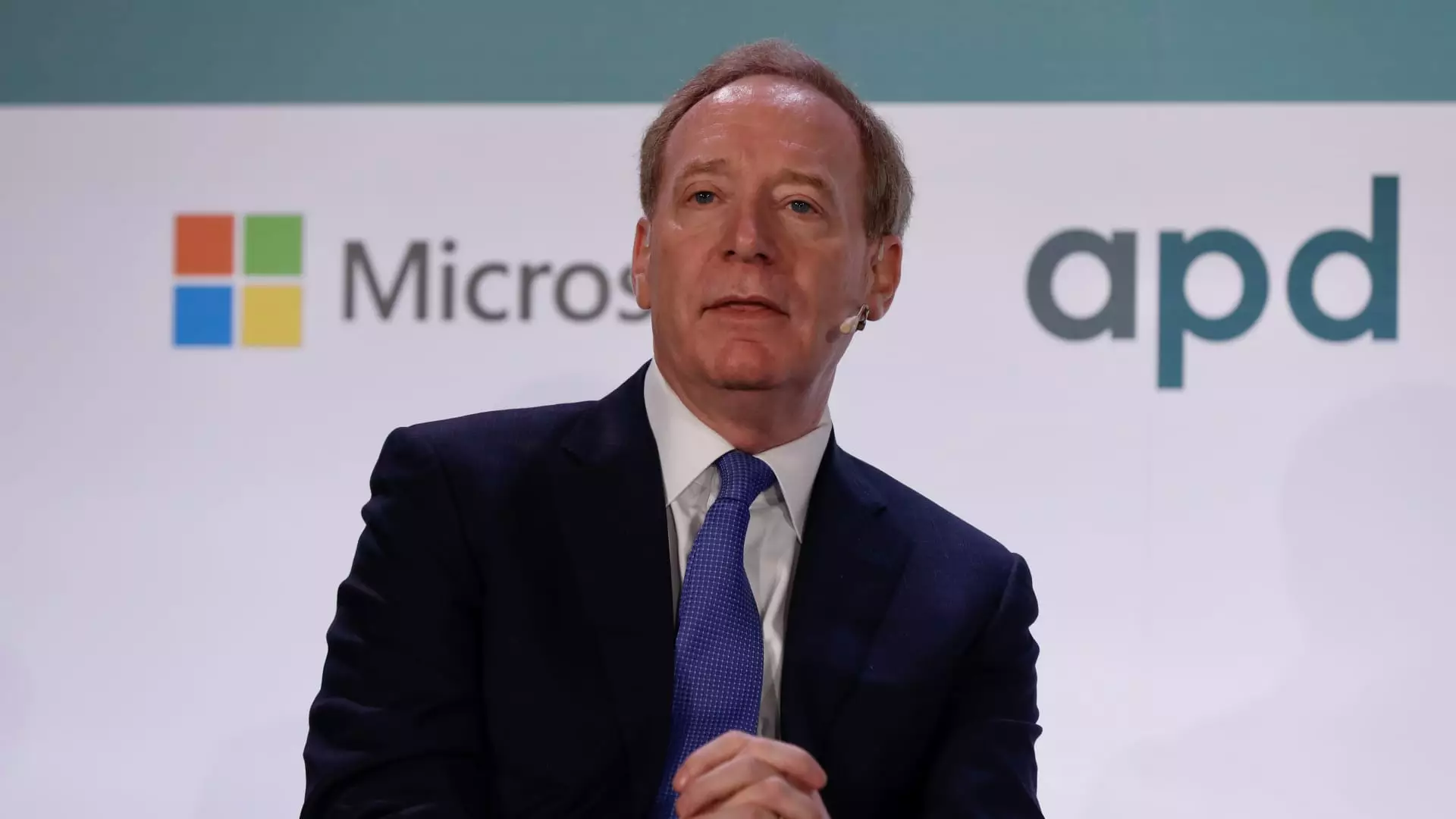In the current geopolitical climate, the perception that China is trailing behind the U.S. and Europe in technological advancements can be misleading. This sentiment was palpably conveyed by Brad Smith, Microsoft’s president and vice-chairman, during his address at the Web Summit in Lisbon. He posited that illusions of a technological gap often stem from a lack of direct engagement with China’s rapidly evolving tech ecosystem. By witnessing China’s industry firsthand, one can appreciate the innovation thriving there, challenging the notion that the West holds an unequivocal edge in technology.
The narrative of competition between the U.S. and China has intensified in recent years, with both nations imposing restrictions and sanctions aimed at curtailing each other’s technological ascendancy. A significant recent development was China’s Huawei unveiling a smartphone reportedly achieving download speeds associated with 5G technology, raising questions about the impact of U.S. sanctions on its technological capabilities. Such advancements suggest that the race for tech supremacy is intricately tied to a series of strategic calculations and innovations rather than a clear distinction between leaders and laggards.
Emerging from Smith’s remarks is the idea that rather than viewing China solely as a competitor, U.S. and European companies need to rethink their approach to global collaboration. By working together to expand their economies and innovate in fields like artificial intelligence, they can counterbalance the rapid technological advancements occurring in China. Smith’s vision emphasizes that fostering partnerships can lead to mutual benefits, creating a more dynamic global landscape where ideas and technologies are shared, thus propelling progress beyond borders.
Microsoft’s long-standing relationship with China serves as a testament to its commitment to operating within the Chinese tech landscape. Since 1992, it has built a substantial presence, including its largest research and development center outside the U.S. This engagement reflects an understanding of the importance of operating in a complex regulatory environment and adapting to local market conditions. However, the challenges tied to U.S. and Chinese governmental dynamics continue to loom large, complicating the trajectory of tech companies aiming to navigate these waters.
As Washington braces for potential policy shifts with the new administration, the future of trade and technology exchanges remains ambiguous. Smith’s acknowledgment of these challenges indicates an awareness that operational decisions will depend significantly on what services are deemed necessary by both governments. Balancing compliance and innovation becomes crucial as companies attempt to navigate these intricate dynamics. Thus, while U.S. tech companies like Microsoft recognize the need to operate in China, they must continually assess and adapt to the evolving political landscape.
In essence, the dialogue surrounding U.S.-China technological competition is multi-faceted. It requires an open-minded approach from Western entities regarding China’s capabilities, a focus on collaborative advancements, and an astute understanding of the interdependency between innovation and diplomatic relations. As the global competition heats up, the need for nuanced perspectives on these relationships is more critical than ever.

